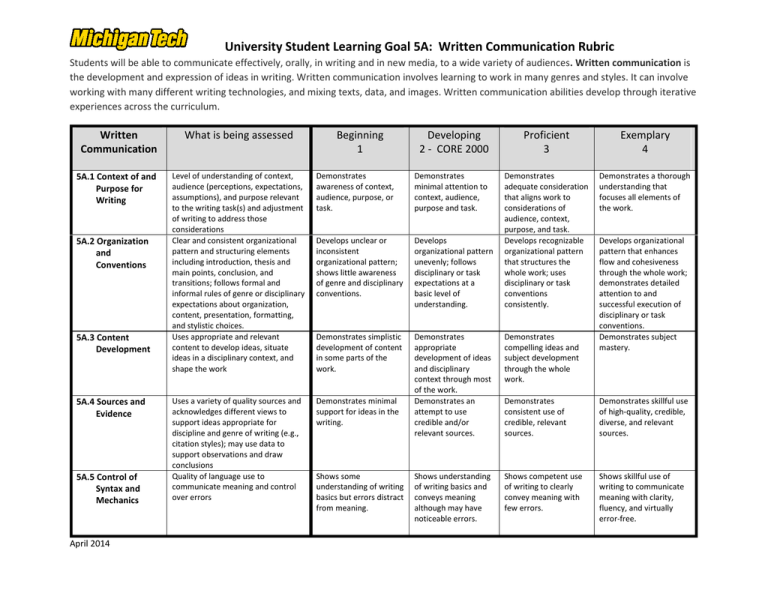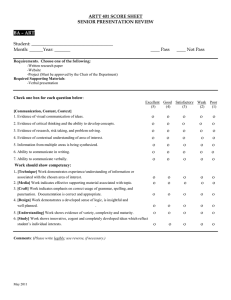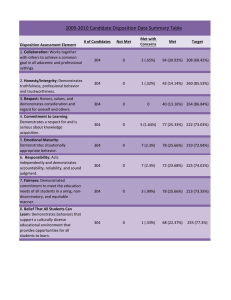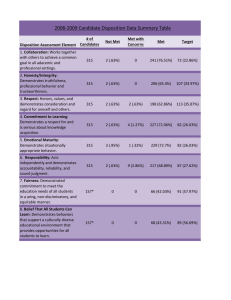University Student Learning Goal 5A: Written Communication Rubric
advertisement

University Student Learning Goal 5A: Written Communication Rubric Students will be able to communicate effectively, orally, in writing and in new media, to a wide variety of audiences. Written communication is the development and expression of ideas in writing. Written communication involves learning to work in many genres and styles. It can involve working with many different writing technologies, and mixing texts, data, and images. Written communication abilities develop through iterative experiences across the curriculum. Written Communication 5A.1 Context of and Purpose for Writing 5A.2 Organization and Conventions 5A.3 Content Development 5A.4 Sources and Evidence 5A.5 Control of Syntax and Mechanics April 2014 What is being assessed Beginning 1 Developing 2 - CORE 2000 Proficient 3 Exemplary 4 Demonstrates adequate consideration that aligns work to considerations of audience, context, purpose, and task. Develops recognizable organizational pattern that structures the whole work; uses disciplinary or task conventions consistently. Demonstrates a thorough understanding that focuses all elements of the work. Level of understanding of context, audience (perceptions, expectations, assumptions), and purpose relevant to the writing task(s) and adjustment of writing to address those considerations Clear and consistent organizational pattern and structuring elements including introduction, thesis and main points, conclusion, and transitions; follows formal and informal rules of genre or disciplinary expectations about organization, content, presentation, formatting, and stylistic choices. Uses appropriate and relevant content to develop ideas, situate ideas in a disciplinary context, and shape the work Demonstrates awareness of context, audience, purpose, or task. Demonstrates minimal attention to context, audience, purpose and task. Develops unclear or inconsistent organizational pattern; shows little awareness of genre and disciplinary conventions. Develops organizational pattern unevenly; follows disciplinary or task expectations at a basic level of understanding. Demonstrates simplistic development of content in some parts of the work. Demonstrates compelling ideas and subject development through the whole work. Uses a variety of quality sources and acknowledges different views to support ideas appropriate for discipline and genre of writing (e.g., citation styles); may use data to support observations and draw conclusions Quality of language use to communicate meaning and control over errors Demonstrates minimal support for ideas in the writing. Demonstrates appropriate development of ideas and disciplinary context through most of the work. Demonstrates an attempt to use credible and/or relevant sources. Demonstrates consistent use of credible, relevant sources. Demonstrates skillful use of high-quality, credible, diverse, and relevant sources. Shows understanding of writing basics and conveys meaning although may have noticeable errors. Shows competent use of writing to clearly convey meaning with few errors. Shows skillful use of writing to communicate meaning with clarity, fluency, and virtually error-free. Shows some understanding of writing basics but errors distract from meaning. Develops organizational pattern that enhances flow and cohesiveness through the whole work; demonstrates detailed attention to and successful execution of disciplinary or task conventions. Demonstrates subject mastery.



